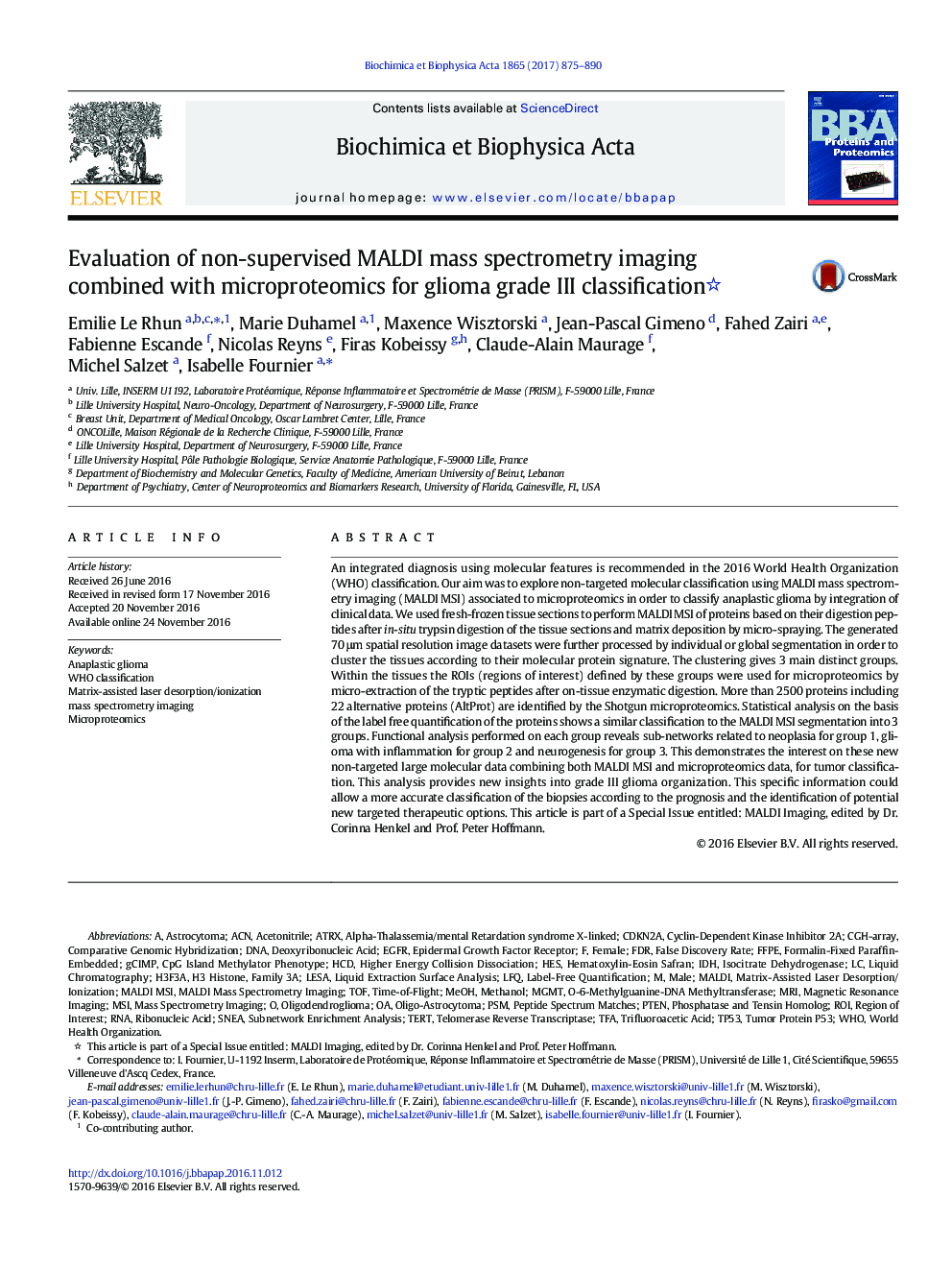| Article ID | Journal | Published Year | Pages | File Type |
|---|---|---|---|---|
| 5131943 | Biochimica et Biophysica Acta (BBA) - Proteins and Proteomics | 2017 | 16 Pages |
â¢MALDI MS imaging data unsupervised clustering determines 3 groups within grade III glioma.â¢Shotgun tissue microproteomics confirm MALDI MS imaging clustering.â¢MALDI MS Imaging adds new information to the 2016 WHO classification and represents a promising tool to develop precision medicine for glioma.
An integrated diagnosis using molecular features is recommended in the 2016 World Health Organization (WHO) classification. Our aim was to explore non-targeted molecular classification using MALDI mass spectrometry imaging (MALDI MSI) associated to microproteomics in order to classify anaplastic glioma by integration of clinical data. We used fresh-frozen tissue sections to perform MALDI MSI of proteins based on their digestion peptides after in-situ trypsin digestion of the tissue sections and matrix deposition by micro-spraying. The generated 70 μm spatial resolution image datasets were further processed by individual or global segmentation in order to cluster the tissues according to their molecular protein signature. The clustering gives 3 main distinct groups. Within the tissues the ROIs (regions of interest) defined by these groups were used for microproteomics by micro-extraction of the tryptic peptides after on-tissue enzymatic digestion. More than 2500 proteins including 22 alternative proteins (AltProt) are identified by the Shotgun microproteomics. Statistical analysis on the basis of the label free quantification of the proteins shows a similar classification to the MALDI MSI segmentation into 3 groups. Functional analysis performed on each group reveals sub-networks related to neoplasia for group 1, glioma with inflammation for group 2 and neurogenesis for group 3. This demonstrates the interest on these new non-targeted large molecular data combining both MALDI MSI and microproteomics data, for tumor classification. This analysis provides new insights into grade III glioma organization. This specific information could allow a more accurate classification of the biopsies according to the prognosis and the identification of potential new targeted therapeutic options. This article is part of a Special Issue entitled: MALDI Imaging, edited by Dr. Corinna Henkel and Prof. Peter Hoffmann.
